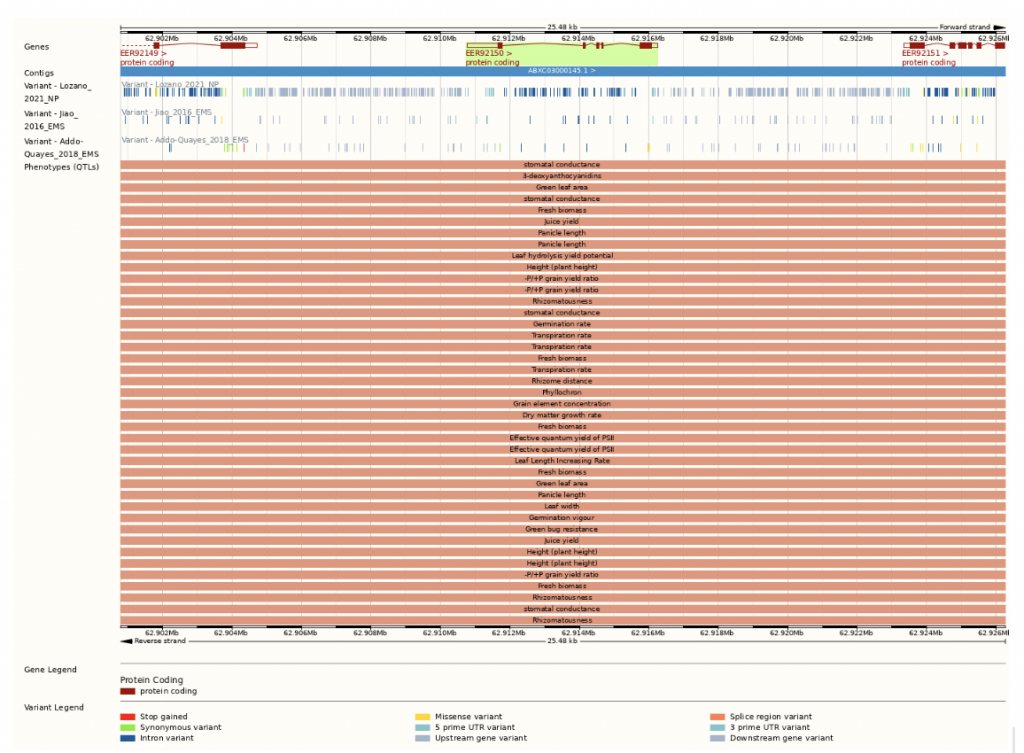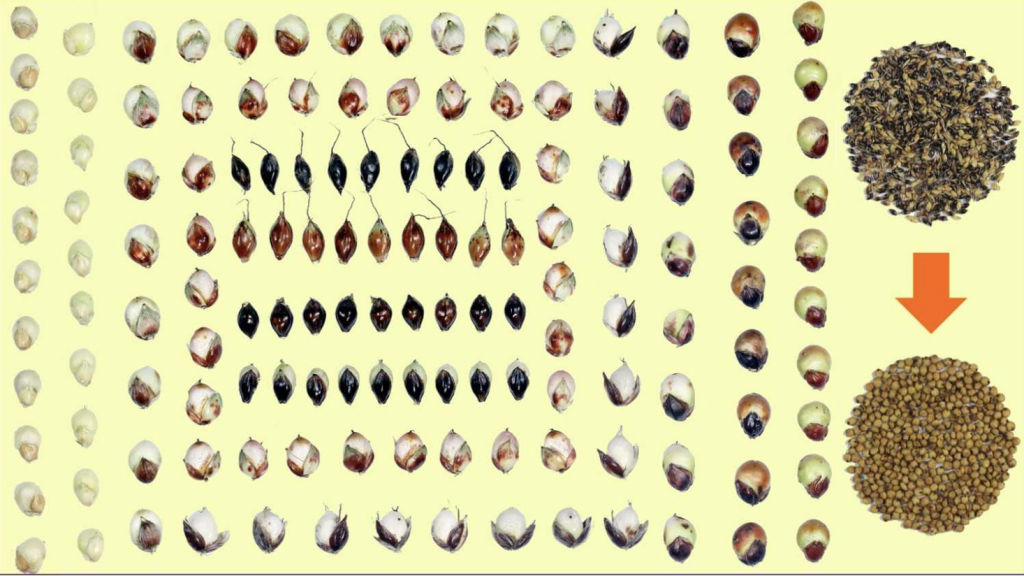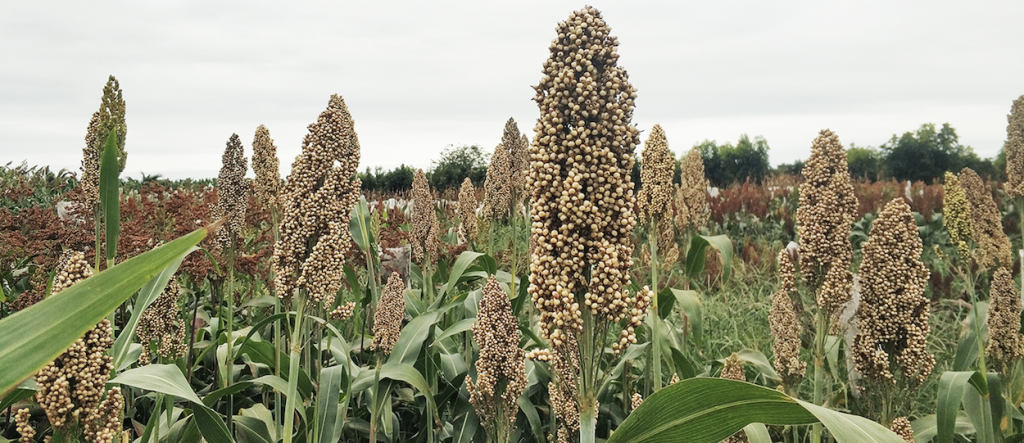Sorghum GC1 Encodes an Atypical Gγ-like Subunit that Controls Glume Coverage
Sorghum grain hulls protect the seeds from insects and fungi. However, these sticky glumes make separating out the seeds a difficult task. Machine threshing can break the embryo of the seeds, which affects its value, while manual separation is labor intensive and time consuming. The sorghum lines that have naked grains are far preferred by growers for their efficiency in seed hull separation and seed quality. The genetic factors behind this important trait remain unknown and breeders and biologists in the sorghum community would benefit from discovering the associated genes.
In an effort to determine the genetic factors influencing glume coverage, researchers at the Innovative Academy of Seed Design at the Chinese Academy of Sciences and the Chinese Academy of Agricultural Sciences performed a GWAS with 352 inbred lines from the USDA SAP population, and localized trait loci by creating a mapping population from two parental lines, SN010, a hulled sweet sorghum landrace from Shanghai, China, and M-81E, a naked improved line from the United States. The researchers were able to locate a region of 58kb containing five genes, three of which are expressed in panicle tissue, but only the Sobic.001g341700 gene model contains an indel site associated with glume coverage. Naturally truncated variations of GC1 (Glume Coverage 1) were found to result in low glume coverage relative to wild sorghum varieties.
A hypothesis for the biochemical mechanism of action is that GC1 affects the stability of a patatin-related phospholipase SbpPLAII-1, a positive regulator of cell division. However, the effect of truncated GC1 on SbpPLAII-1 inhibits cell production resulting in low glume coverage. Researchers suggest that gene editing techniques can target GC1 to confer this favorable trait into breeding lines.
“Sorghum is one of the earliest cultivated gramineous crops. Loss of glume coverage leading to the naked grains is a symbolic event during the crop threshing process and crop domestication. Our five years’ work first identified GC1, a key gene in controlling glume coverage in sorghum and millet, and also revealed a novel G-protein signaling pathway involved in their glume development and spikelet architecture establishment. In the future, molecular design of the site-specific truncated mutations in GC1 by gene-editing, or utilizing the natural truncated variants can fast achieve the rapid de novo domestication of wild cereal germplasm resources.” – Peng Xie
SorghumBase example:

Reference
Xie P, Tang S, Chen C, Zhang H, Yu F, Li C, Wei H, Sui Y, Wu C, Diao X, Wu Y, Xie Q. Natural variation in Glume Coverage 1 causes naked grains in sorghum. Nat Commun. 2022 Feb 25;13(1):1068. doi: 10.1038/s41467-022-28680-3. PMID: 35217660. Read more
Related Project Websites
Xie Lab: website



